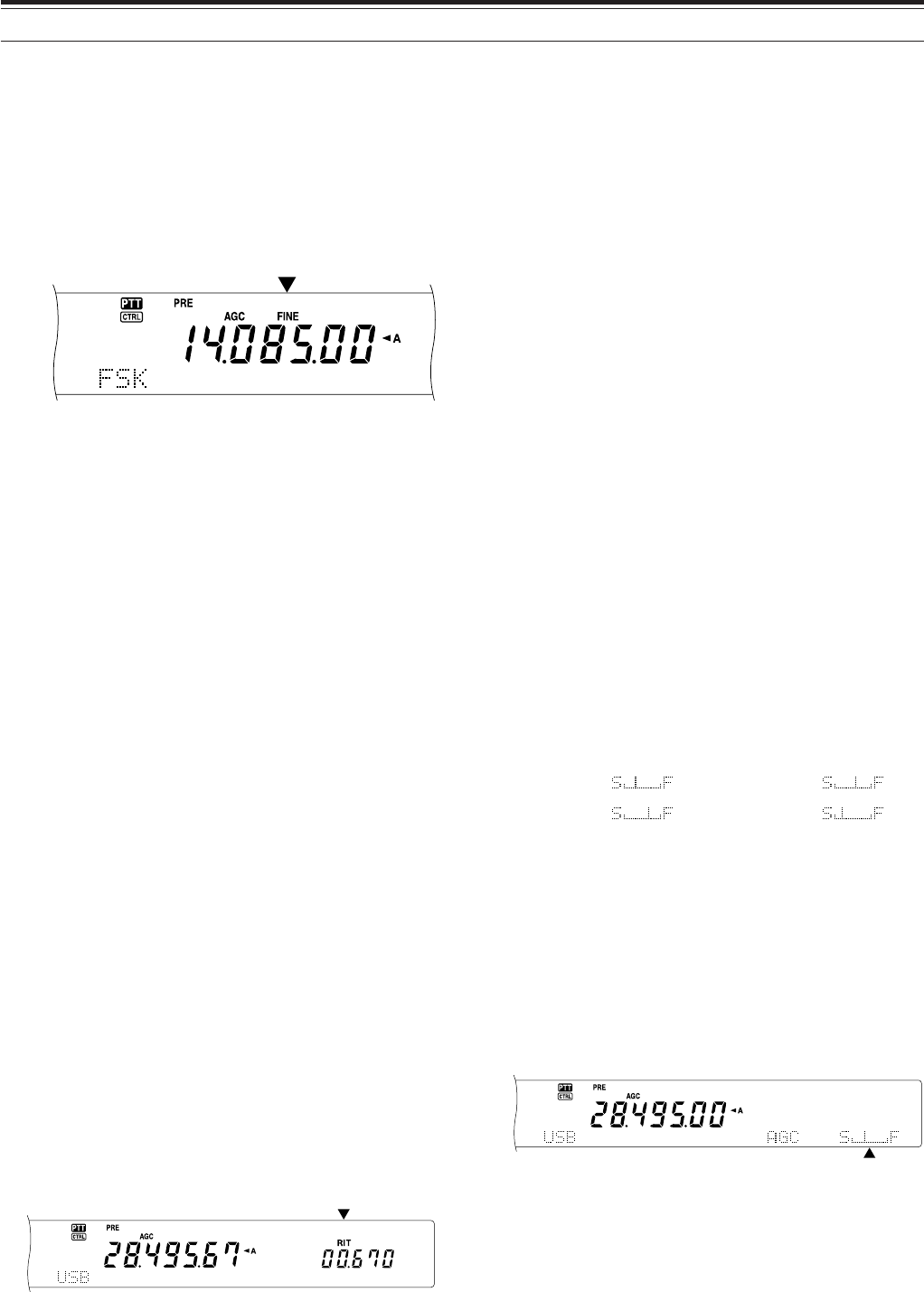
38
9 COMMUNICATING AIDS
■ Fine Tuning
The default step value when turning the Tuning
control to change the frequency is 10 Hz for SSB,
CW, and FSK modes, and 100 Hz for FM and AM
modes. However, you can change the step size to
1 Hz for SSB, CW, and FSK modes, and 10 Hz for
FM and AM modes.
1 Press [9/ FINE/STEP].
• “FINE” appears.
2 Turn the Tuning control to select the exact
frequency.
3 To quit the function, press [9/ FINE/STEP]
again.
• “FINE” disappears.
Note:
◆
Fine Tuning works only on the main transceiver.
◆
If Menu No. 03 is ON, you cannot perform fine tuning in FM
mode for all bands and AM mode for the 144 MHz/
430/ 440 MHz/ 1.2 GHz (TS-2000 optional) bands.
■ Equalizing VFO Frequencies (A=B)
This function allows you to copy the frequency and
modulation mode of the active VFO to the inactive
VFO.
1 Select the frequency and mode on VFO A or
VFO B.
2 Press [A=B].
• The frequency and mode selected in step 1
are copied to the inactive VFO.
3 Press [A/B] to confirm that the frequency was
copied.
RIT (RECEIVE INCREMENTAL TUNING)
RIT provides the ability to change your receive
frequency by ±20.00 kHz in steps of 10 Hz without
changing your transmit frequency. If the Fine Tuning
([9/ FINE/STEP]) function is ON, the step size
becomes 1 Hz. RIT works equally well with all
modulation modes and while using VFO or Memory
Recall mode.
1 Press [RIT/ CW TUNE].
• “RIT” and the RIT offset appear.
2 If required, press [CLEAR] to reset the RIT offset
to 0.
3 Turn the RIT/ SUB control to change your receive
frequency.
4 To turn off RIT, press [RIT/ CW TUNE].
• The receive frequency is returned to the
frequency that was selected prior to step 1.
Note:
◆
RIT works only on the main transceiver.
◆
When storing the frequency in a Memory channel with RIT
function ON, RIT offset frequency is added or subtracted to/ from
the VFO frequency. Then the calculated data is stored in the
Memory channel.
AGC (AUTOMATIC GAIN CONTROL)
When using a mode other than FM, AGC selects the
time constant for the automatic gain control circuit.
Selecting a slow time constant will cause the receiver
gain and S-meter readings to react slowly to large
input changes. A fast time constant causes the
receiver gain and the S-meter to react quickly to
changes in the input signal. A fast AGC setting is
particularly useful in the following situations:
• Tuning rapidly
• Receiving weak signals
• Receiving high-speed CW
Unlike other transceivers, the TS-2000’s digital AGC
circuit allows you to adjust the time constant from
slow to fast in 20 steps, where 1 is the slowest and
20 is the fastest. Furthermore, you can switch the
AGC OFF if you desire.
For your convenience, the following default AGC time
constant has already been programmed.
SSB: Level 7 CW: Level 12
FSK: Level 14 AM: Level 5
To change the default time constant:
1 Press [8/ AGC/OFF].
• The AGC time constant scale appears on the
sub dot-matrix display.
2 To select a slower time constant, turn the
MULTI/ CH control counterclockwise. The bar
indicator moves from F(ast) to S(low). To select
a faster time constant, turn the MULTI/ CH
control clockwise. The bar indicator moves from
S(low) to F(ast).
3 If you want to turn the AGC OFF, press [FUNC],
[8/ AGC/OFF].
Note: You cannot adjust the AGC time constant on the sub-receiver.


















